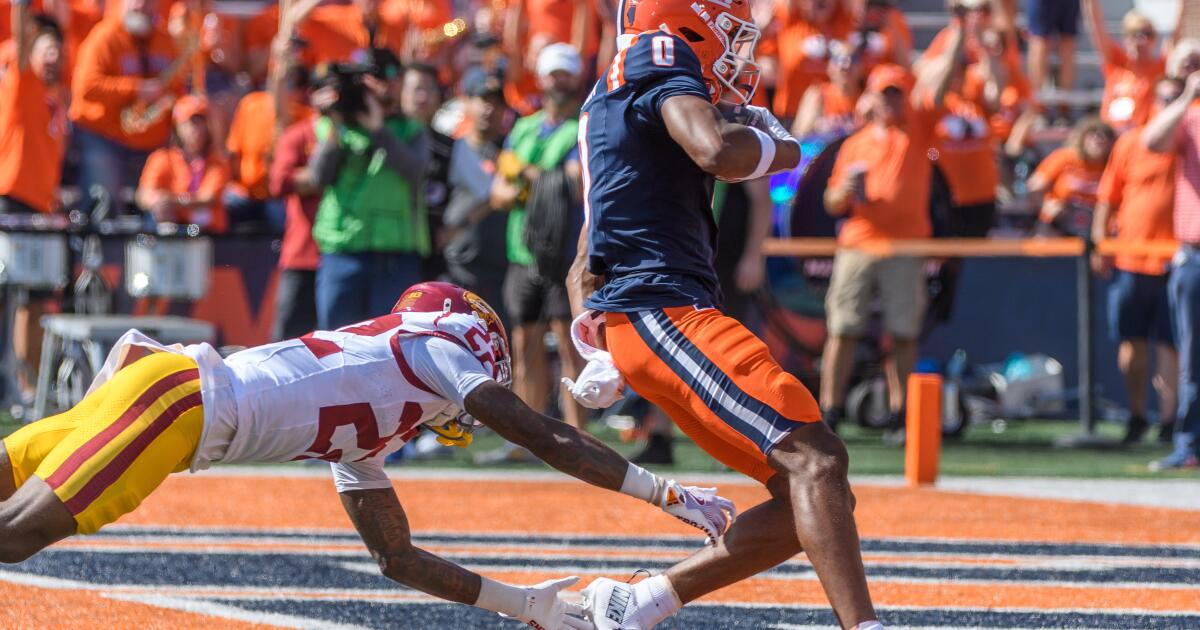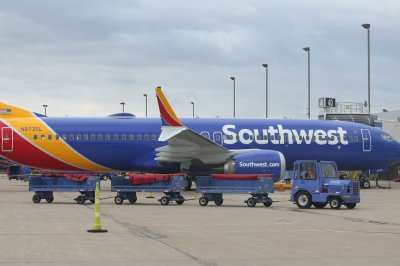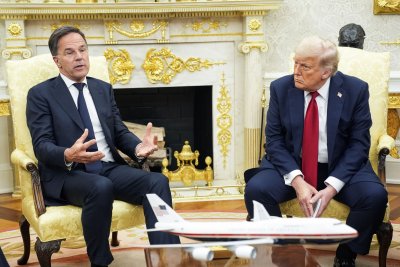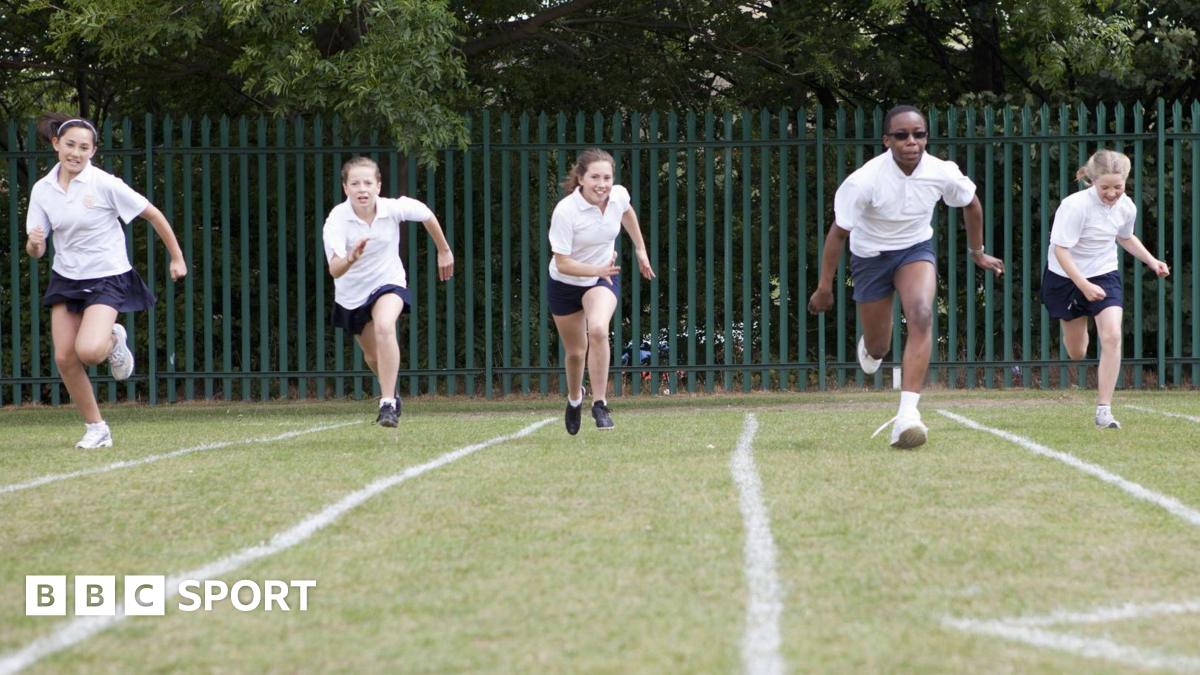Where does USC go from here with its struggling secondary?
After an inconsistent start to the season for USC’s secondary, the defensive coordinator stood in front of a cadre of cameras and didn’t mince words. There were too many coverage busts leading to too many big pass plays, he said. He planned to spend the bye week studying film with microscopic focus in hopes of understanding exactly what had gone wrong.
“The lowlights cannot be that low,” he said. “You can’t just say it happens sometimes. Those things can’t happen.”
That coordinator was Alex Grinch, speaking in September 2023. Six weeks later, he was fired.
The circumstances aren’t quite that dire for the Trojans’ defense — or Grinch’s successor, D’Anton Lynn — in October 2025. But the problems with big pass plays have persisted since then. In fact, they’ve been worse this season than they were under USC’s previous coordinator, in spite of the fact that USC has yet to play a top-40 passing offense.
Through five games, USC has given up 51 pass plays of 10 yards or more. That’s eighth worst in the nation, equating to an average of over 10 such plays per game. And against Illinois, that propensity for allowing explosive plays came back to bite USC in a brutal loss.
“The pass defense has to get better,” USC coach Lincoln Riley said after the game. “It just wasn’t good enough.”
Two days later, when asked about the state of his secondary, Riley took a more encouraging tone. The cornerbacks, he said, “had a few errors here and there.” Take the game’s two biggest pass plays out of the equation, he added, and “it’s going to be really tough for them to beat us.”
Whether his cornerbacks have that same confidence coming out of the loss could be another question. How they respond out of this week’s bye, with key matchups against Michigan and Notre Dame ahead, might ultimately determine the course of USC’s season.
“Confidence, you can’t fake that,” Riley said. “We’re doing enough good things that it should show up and there should be confidence from that, but if we keep making some of the mistakes that we’ve made, whether it’s a busted coverage, or like not leveraging the football — those are controllable on us. Other people aren’t even having to make plays that way.”
Three consequential moments in the second half last Saturday were directly correlated to crippling mistakes from USC defensive backs. An Illinois swing pass in the third quarter went for a 64-yard score after safety Bishop Fitzgerald took a bad angle on running back Justin Feagin, and two corners in the area failed to shed blocks. Then, in the fourth quarter, another cornerback, Braylon Conley, was burned twice on explosive pass plays — first, when he was beat for a touchdown on a slant over the middle, and then, on the ensuing possession, when he fell down defending a hitch route that exploded for 61 yards.
Most of the group’s most glaring mistakes on big plays this season have been attributed to breakdowns in communication. Those issues were only exacerbated last week in the absence of safety Kamari Ramsey, who had recently taken over relaying calls from the sideline to the secondary.
Ramsey should return next week, but Riley said this week that communication on defense has been a primary focus for USC.
To Fitzgerald, the week off was a chance to “fully reset everything” in the secondary.
“It’s really just focusing more on the same things and trying to execute as a whole,” Fitzgerald said. “As a defense, if 10 guys do one thing but one person does the wrong thing, it’s a busted play. We can’t afford that. So we’re just trying to get everybody on the same page.”
As the Trojans enter the most difficult stretch of their schedule, it’s not clear who the coaches will trust most at corner going forward.
Injuries early this season robbed USC of two of its most experienced cornerbacks, Prophet Brown and Chasen Johnson. Then last week, as USC’s secondary unraveled in the loss to Illinois, redshirt senior DeCarlos Nicholson was in and out of the lineup with what appeared to be a nagging hamstring.
Nicholson, nonetheless, has been USC’s most consistent cover corner through five weeks. Across from him, redshirt freshman Marcelles Williams has started the last three games, but hasn’t by any means run away with the job.
Senior DJ Harvey was brought in from the transfer portal to be a major contributor at corner, but he has fallen far short of those expectations. He played only five snaps last Saturday, in spite of the team’s dire depth at corner, but one of those plays resulted in a devastating pass interference call on Illinois’ game-winning drive.
“We’re pretty young out there on the perimeter right now, without having Prophet and Chasen,” Riley said. “We need [Harvey’s] experience to show up. His emergence in this next phase of the season will be important for us, and he’s going to get every opportunity to do it.”
The most uncertain spot in the secondary has been in the slot, where Riley has yet to find a capable replacement for Brown. But USC might have an answer on the way in the form of true freshman Alex Graham.
Graham was an early standout during USC’s preseason camp but has been on the shelf since. Coaches have suggested he could return as soon as next week against Michigan and potentially step into a significant role right away in the slot, where, to this point, USC has relied on Ramsey playing out of position.
There’s not much depth at defensive back for USC to mine after that. True freshman RJ Sermons was one of the more coveted cornerback prospects in America, when he reclassified in the spring to enroll at USC a year early.
Riley didn’t rule out the possibility that Sermons, who should be a senior in high school, could play a critical role down the stretch. He said USC was “pushing it” with both he and Graham in hopes that they’d be ready “sooner than later.”
“They’re two guys that are talented enough to contribute for us right now,” Riley said. “You’re on just a race against time to get them ready, to pump as many reps into those guys. Because they clearly have the ability.”
Regardless, it’s going to take more than two true freshmen to steady USC’s secondary. The more pressing question now, after a suspect start this season, is whether the rest of the group is able to right the ship from here.
“One game doesn’t define them as a player, doesn’t define us as a defense,” safety Christian Pierce said. “We just keep our heads high and put the best foot forward.”






